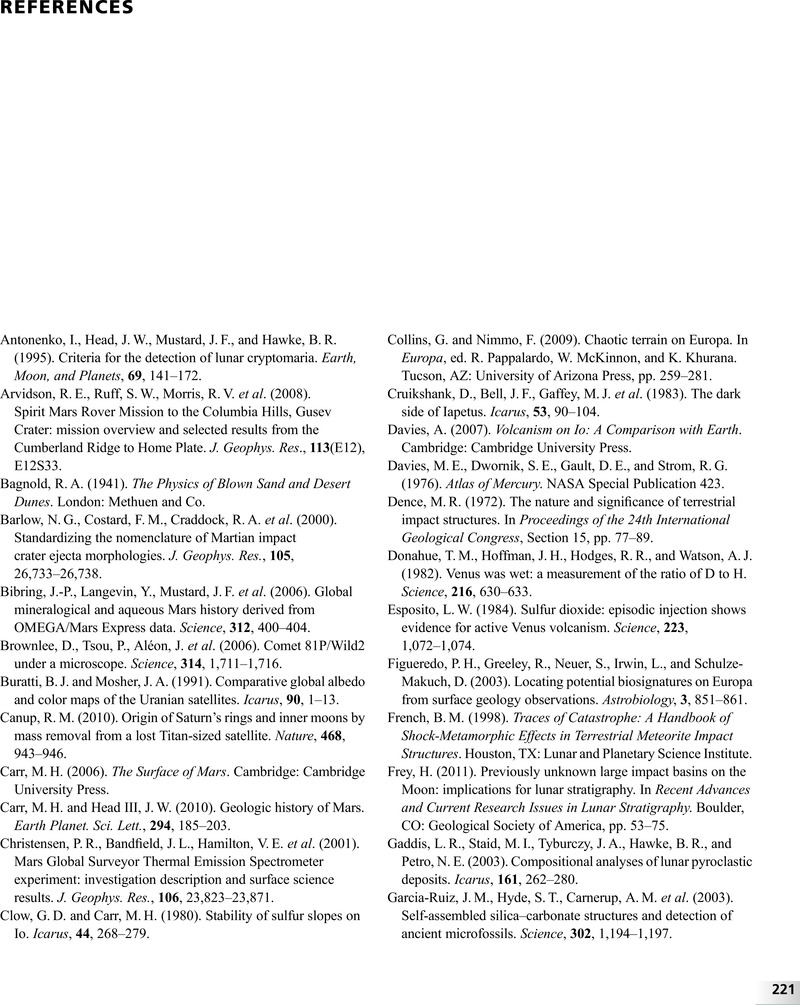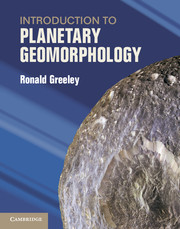Book contents
- Frontmatter
- Contents
- Foreword
- Preface
- Acknowledgments
- Chapter 1 Introduction
- Chapter 2 Planetary geomorphology methods
- Chapter 3 Planetary morphologic processes
- Chapter 4 Earth’s Moon
- Chapter 5 Mercury
- Chapter 6 Venus
- Chapter 7 Mars
- Chapter 8 The Jupiter system
- Chapter 9 The Saturn system
- Chapter 10 The Uranus and Neptune systems
- Chapter 11 Planetary geoscience future
- Appendices
- References
- Further Reading
- Index
- References
References
Published online by Cambridge University Press: 05 February 2013
- Frontmatter
- Contents
- Foreword
- Preface
- Acknowledgments
- Chapter 1 Introduction
- Chapter 2 Planetary geomorphology methods
- Chapter 3 Planetary morphologic processes
- Chapter 4 Earth’s Moon
- Chapter 5 Mercury
- Chapter 6 Venus
- Chapter 7 Mars
- Chapter 8 The Jupiter system
- Chapter 9 The Saturn system
- Chapter 10 The Uranus and Neptune systems
- Chapter 11 Planetary geoscience future
- Appendices
- References
- Further Reading
- Index
- References
Summary

- Type
- Chapter
- Information
- Introduction to Planetary Geomorphology , pp. 221 - 224Publisher: Cambridge University PressPrint publication year: 2013



